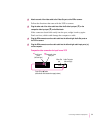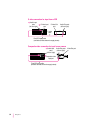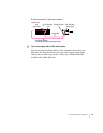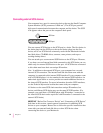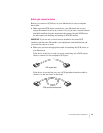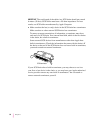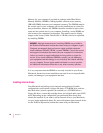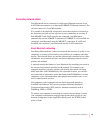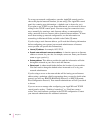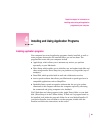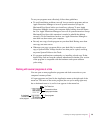
Connecting network cables
Your Macintosh can be connected to a high-speed Ethernet network via an
AAUI Ethernet connector or a high-speed 10BASE-T Ethernet connector. You
can also connect to a LocalTalk network.
It is possible to be physically connected to more than one kind of network at
the same time, but you can use only one of your connections at one time. If
both 10BASE-T and AAUI networks are connected, your Macintosh
automatically uses the 10BASE-T connection. If 10BASE-T and LocalTalk are
connected, your Macintosh uses the 10BASE-T connection. If AAUI and
LocalTalk are connected, your Macintosh uses the AAUI connection.
About Macintosh networking
Your Power Macintosh can connect to a network that consists of as few as two
computers or as many as thousands or even millions of computers and other
devices. The network allows you and the other people connected to it to share
information, access remote services, and share computing resources such as
printers and modems.
A network extends the features of your Macintosh by extending your reach to
the services and resources provided on the network. For example, your
computer alone lets you store, retrieve, and modify information on floppy
disks, hard disks, and CD-ROM discs. On a network, however, you can also
store and retrieve information on the hard disks and CD-ROM discs of other
computers, access information that other people have stored for you, or use
mail or other network services.
Your computer comes equipped with two built-in network interfaces:
LocalTalk and Ethernet. You can also purchase additional Peripheral
Component Interconnect (PCI) cards for alternative networks such as
Toke nRing, ISDN, or FDDI.
To connect your computer to a network you need to do two things: connect
your computer to the network using the appropriate cable, and set up your
network configuration in the AppleTalk control panel, the TCP/IP control
panel, or both.
59
Connecting Additional Equipment



